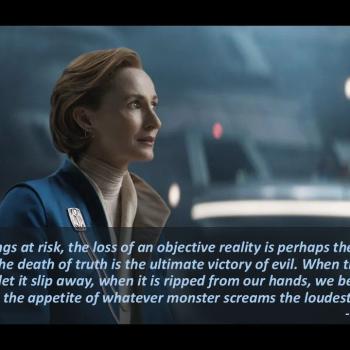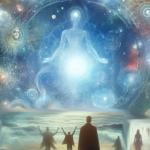 One of the most striking images early in season 2 of LOST is when Mr. Eko and Jin hide from passing Others. As we see legs go by, all are barefoot, one has muddy bare legs, and one is carrying a teddy bear on a string.
One of the most striking images early in season 2 of LOST is when Mr. Eko and Jin hide from passing Others. As we see legs go by, all are barefoot, one has muddy bare legs, and one is carrying a teddy bear on a string.
Soon after, we learn that a teddy bear was in the possession of one of the children who were abducted by the Others.
What are we to make of this? It was a clue that these sinister Others that would be demonized in the minds of the tailies and then of everyone were not simply heartless savages (as the survivors of Flight 815 were themselves, at times). They took a child, for reasons we’d only come to understand partially even by the end of season 4. But they went back to recover one child’s teddy bear, and one of them waded in the mud trying to find it.
 One great trait of science fiction is that it seems to be able to deal well with the ambiguities of morality in real human beings. Whether one thinks of the Star Trek episode where Capt. Kirk’s aggressive and gentler natures get separated into two separate individuals, or Star Trek’s redemption of Darth Vader, or Battlestar Galactica’s and the Matrix’s exploration of whether the depersonalized “toasters” or “squiddies” are in fact “people”, these shows, and now LOST, explore the ambiguity that what is right and wrong, and thus who is good and evil, may not be entirely relative, but it certainly is often complex.
One great trait of science fiction is that it seems to be able to deal well with the ambiguities of morality in real human beings. Whether one thinks of the Star Trek episode where Capt. Kirk’s aggressive and gentler natures get separated into two separate individuals, or Star Trek’s redemption of Darth Vader, or Battlestar Galactica’s and the Matrix’s exploration of whether the depersonalized “toasters” or “squiddies” are in fact “people”, these shows, and now LOST, explore the ambiguity that what is right and wrong, and thus who is good and evil, may not be entirely relative, but it certainly is often complex.












